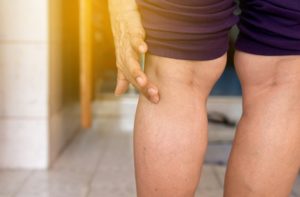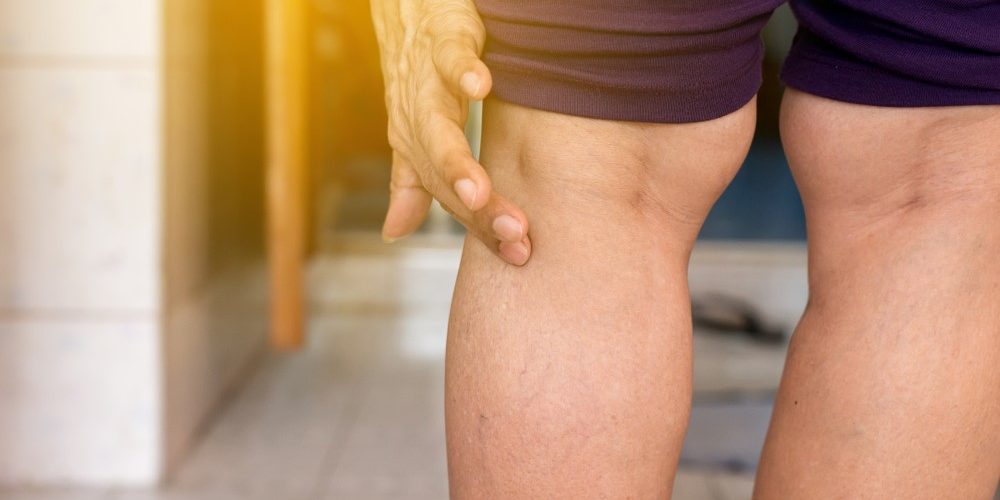 Varicose veins are enlarged, twisted veins that are visible under the skin and are commonly seen in patients’ legs. For many people, varicose veins and spider veins — a common, mild variation of varicose veins — are a cosmetic concern. However, for others varicose veins can cause aching, pain and swelling and in some cases can lead to more serious problems. Varicose veins develop when the one-way valves inside the vein fails to work properly. This can cause the blood to collect or pool in your legs.
Varicose veins are enlarged, twisted veins that are visible under the skin and are commonly seen in patients’ legs. For many people, varicose veins and spider veins — a common, mild variation of varicose veins — are a cosmetic concern. However, for others varicose veins can cause aching, pain and swelling and in some cases can lead to more serious problems. Varicose veins develop when the one-way valves inside the vein fails to work properly. This can cause the blood to collect or pool in your legs.
Conservative measures for treating varicose veins include exercise, weight loss, elevating your legs and wearing compression stockings. Compression or support stockings can help ease discomfort and may prevent them from worsening. But if you’re concerned about how your veins look and feel and self-care measures haven’t stopped your condition from getting worse, it may be time to see your doctor.
Here are some signs that it’s time to seek professional treatment for your varicose veins:
- Just like with any illness or injury, it’s a good rule of thumb to seek treatment if symptoms don’t improve or progressively get worse. Varicose veins carry a range of symptoms including aching and swelling, hot burning sensations, itchiness in the legs and fatigue in the muscles. Chronic venous insufficiency (CVI) is a condition often associated with varicose veins. Venous insufficiency occurs when the overall vein blood flow from the legs is compromised. Symptoms of venous insufficiency include:
- Swelling in the lower legs and ankles, especially after extended periods of standing
- Aching or tiredness in the legs
- New varicose veins
- Discoloration and hardening of the skin and tissue beneath the skin
- Leathery-looking skin on the legs
- Flaking or itching skin on the legs or feet
- Stasis ulcers, or open sores on the surface of the skin which can become very difficult to heal and can become infected. If left untreated, infection can spread to surrounding tissue, leading to a condition known as cellulitisIf CVI is not treated, over time the changes noted above may worsen and are usually not reversible. “The problem will not go away on its own. The earlier CVI is diagnosed and treated, the better your chances of preventing serious complications and potentially irreparable damage and discoloration to your limbs,” said Michael Petersen, MD, vascular surgeon at Vascular Associates of Long Island and medical director of Mather Hospital’s Wound Treatment Center.
- We tend to compartmentalize our health issues as standalone problems, but the body is composed of interconnected systems and a problem in one area can indicate issues elsewhere. Vein health in the legs can affect and be affected by our diet, fitness, blood pressure, diabetes, cardiac, respiratory conditions and more. If you’re overweight, a smoker or have other health conditions that affect your blood flow, are diabetic or have some other health issue, then varicose veins can be a symptom of or indicator of a more serious health risk. Pay attention to your body, symptoms and underlying health issues and make sure that you talk to your doctor about getting the care you need.
- Varicose veins can appear unsightly and unpleasant. While in some cases this is purely aesthetic, that doesn’t mean it doesn’t have an impact on your life. When your physical appearance is altered by factors outside of your control it can lead to a loss of confidence and in some cases negatively impact your mental health. Don’t underestimate how important it is to have a positive and healthy body image. If having your varicose veins treated will benefit you both physically and mentally, then it may be worth considering treatment.

